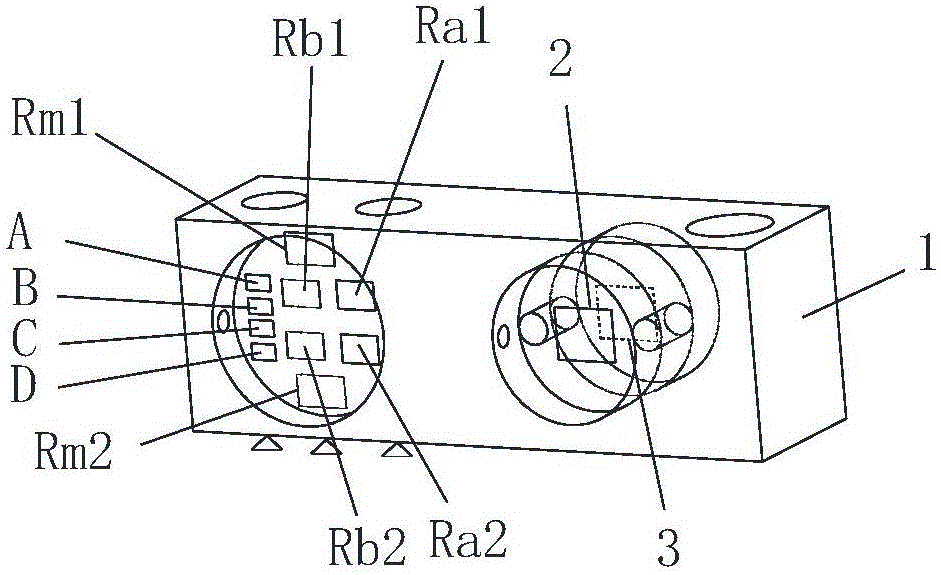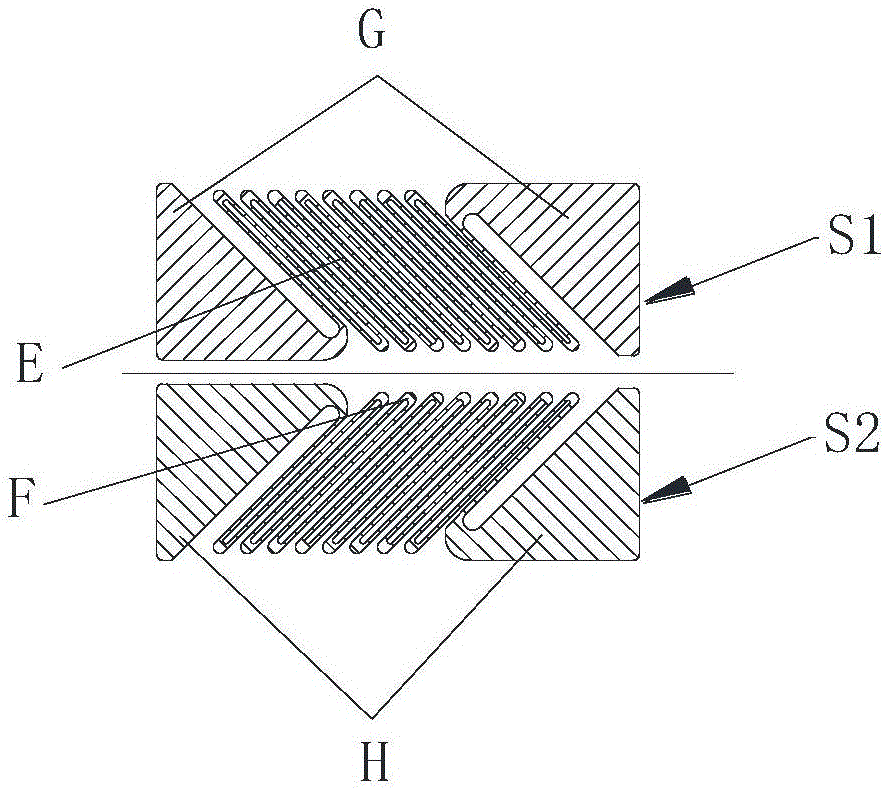Resistor stain type sensor based on 3D printing processing and manufacturing method
A resistance strain type and 3D printing technology, applied in the field of sensors, can solve the problems of poor process versatility, low degree of automation, and low material utilization rate, and achieve the effects of simplifying the manufacturing process and time, high degree of automation, and reducing production costs
- Summary
- Abstract
- Description
- Claims
- Application Information
AI Technical Summary
Problems solved by technology
Method used
Image
Examples
Embodiment 1
[0044] Such as figure 1 The shown 3D printing-based resistance strain weighing load cell includes front strain gauge 2 (ie, strain gauges S1 and S2) and reverse surface strain gauge 3 (ie, strain gauges S3 and S4), zero-point output compensation resistors Ra1 and Ra2, zero output temperature compensation resistors Rb1 and Rb2, and sensitivity temperature compensation resistors Rm1 and Rm2.
[0045] combine figure 2 , the specific manufacturing method is:
[0046] S201. Using a mechanical or chemical method to remove oil stains and residual particles to increase the binding force on the surface of the elastic element 1 . Specifically, the elastic element 1 is made of 2Cr13 material, the surface of the elastic element 1 is polished and cleaned, ultrasonically cleaned for about 15 minutes, and oil and residual particles on the surface are removed, and then dried.
[0047] Elastic elements need to adopt metal elastic elements.
[0048] The model is established according to th...
Embodiment 2
[0066] Embodiment 2 is a resistance strain type pressure sensor based on direct 3D printing processing, such as Figure 9 As shown, the schematic diagram of the structure is shown in Figure 9 As shown, 1 is an elastic element, 7 is a strain gauge group, and the strain gauge group 7 includes four strain gauges S1, S2, S3 and S4. The arrangement and structure of the four strain gauges are as follows Figure 6 Shown, where O, P, Q, S are conductive contacts.
[0067] The manufacturing method of the resistance strain type pressure sensor of embodiment 2, comprises the following steps:
[0068] S701, elastic element 1 is made of 2024-T4 aluminum alloy material, the surface has been anodized, so the surface of the elastic element has an insulating base of metal oxide. After ultrasonic cleaning for about 15 minutes, the surface oil and residual particles are removed and then dried.
[0069] S702, use the air jet printing printer according to the following Figure 6 The patterns ...
Embodiment 3
[0073] The difference from Embodiment 1 is that the inkjet printing method is used to print the sensitive grid, conductive lines and conductive contacts.
[0074] As a preferred embodiment, during air jet printing or ink jet printing, the object to be printed (elastic element) can be preheated, and the heating temperature range is controlled at 30-200 degrees to improve printing accuracy.
[0075] In addition, the temperature of the heat preservation in the incubator can be set to 150°C for 4 hours. There is no strict restriction here, and it can be adjusted according to production needs and actual conditions.
[0076] As a preferred embodiment, an air jet printer is used to print the sensitive grid, and an inkjet printer is used to print the conductive lines and conductive contacts.
PUM
 Login to View More
Login to View More Abstract
Description
Claims
Application Information
 Login to View More
Login to View More - R&D
- Intellectual Property
- Life Sciences
- Materials
- Tech Scout
- Unparalleled Data Quality
- Higher Quality Content
- 60% Fewer Hallucinations
Browse by: Latest US Patents, China's latest patents, Technical Efficacy Thesaurus, Application Domain, Technology Topic, Popular Technical Reports.
© 2025 PatSnap. All rights reserved.Legal|Privacy policy|Modern Slavery Act Transparency Statement|Sitemap|About US| Contact US: help@patsnap.com



